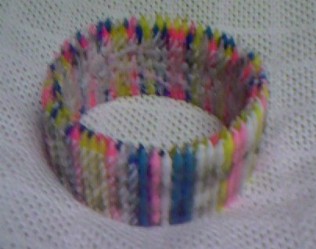| VIKING
FUNERAL BALLOON - w Crown Design Engine - burns
up at the end to scatter the ashes This is a concept balloon. Idea is for a paper
balloon at around 1600 cubic feet. Powered by
around 1000 birthday candles. With reasonably
serious heating can figure a heat rise of around
100 F degrees and around 1/5 ounce lift per cubic
foot . Or a pound of gross lift per 80 cubic
feet. So total lift is around 20 pounds or
320 ounces. This makes the balloon around 15 feet
in diameter. Surface area is around 800 square
feet. So figure to use up around 5 pounds of
paper. High quality 4 foot rolls of white tissue
paper should work fine. And burn up well. Could
even use newsprint and make a Newspaper Taxi.
Personally I believe in four foot wide rolls and
to forget about patching small pieces of paper
together to get large pieces of paper. Unless
absolutely necessary. Can figure on roughly 1000 birthday candles for a
10-15 minute flight. Original weight is 24 candles
per ounce. Or 40 ounces. Padded to 50 or 60
ounces. Add in another pound for a tic-tac-toe -
pound-sign frame ( # ). This means the empty
weight of the viking balloon is around 10 pounds.
Leaving roughly 10 pounds for the payload. Which
in this case is the ashes and funeral bier. Could form the birthday candles into a
double-file crown of 500+500 birthday candles. The
candles are 1/4 wide. This would makes the engine
roughly 3 feet in diameter. Which seems fairly
cumbersome. But the funeral bier could go in the
middle. Or could have concentric circles. Or a set
of say 7 crown engines as pictured below. Which
has roughly 144 birthday candles. Or could also do
other configurations of candle-engines. Since each
engine has so many candles they won't easily blow
out. From there can add more engines to superheat
the balloon. As example there is no particular
reason why somebody can't use 2000 candles. Since
paper does not melt and won't burn until
Fahrenheit 451. Flight time is around 10 to 15 minutes. Which
should be long enough for the balloon to fly a
mile or so out to sea. When the candles burn down
the balloon should naturally burn up. Some
artfulness may be needed to get the timing right
so the balloon burns up and the ashes scatter as
completely as possible. Into the wind, into the
slipstream, over the sea. "From the sea we came
and back to the sea we shall go." Can also launch from ships. Which can sail with the wind in the slipstream. Can also have group funerals. Or common funerals. For example on certain days of the year. Such as Day of the Dead or Ash Wednesday. Or Easter. Including both memorial balloons, honor guard and actual viking balloons. Can also have special launch places. Wherever the end of the earth is. And don't necessarily have to go over the sea. Or large lake. Deserts and wilderness areas should work too. Just stay away from any populated areas or fire danger areas and figure it out. Best way is to build and fly a practice balloon first. Can always work with scale balloons too. Which will prove design for the larger models. And to always have a backup and launch commander. Also need to get a launch clearance from the FAA too. Since the balloon is over 107 cubic feet. And is therefore government regulated. Per FAA/DOT 101.7 Most likely use of a balloon for any actual viking funerals will be for pets. Especially since the lower payload of ashes should enable the gross weight and size to be below 107 cubic feet.
 Basic plan is to start small, under 108 cf, per FAA restrictions for unregulated free balloons. Once concept is established then scale up to 1600 cubic feet. Which I think is a nice sounding number. Otherwise could scale up through some perfect combination of Doubling, which is balloon mathematics. Unfortunately cubic feet does not work out, since the numbers would be 1024 or 2048 ie too small and too big. Perhaps liters could scale out better to create some perfect volume. Or could cheat and use math for a slightly altered scale. |
www.overflite.com balloons@overflite.com - - - - - - |